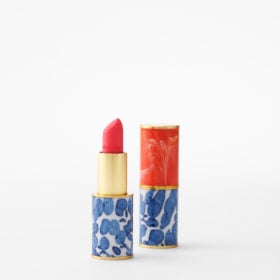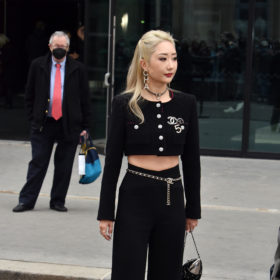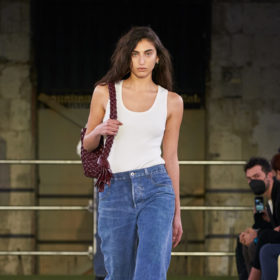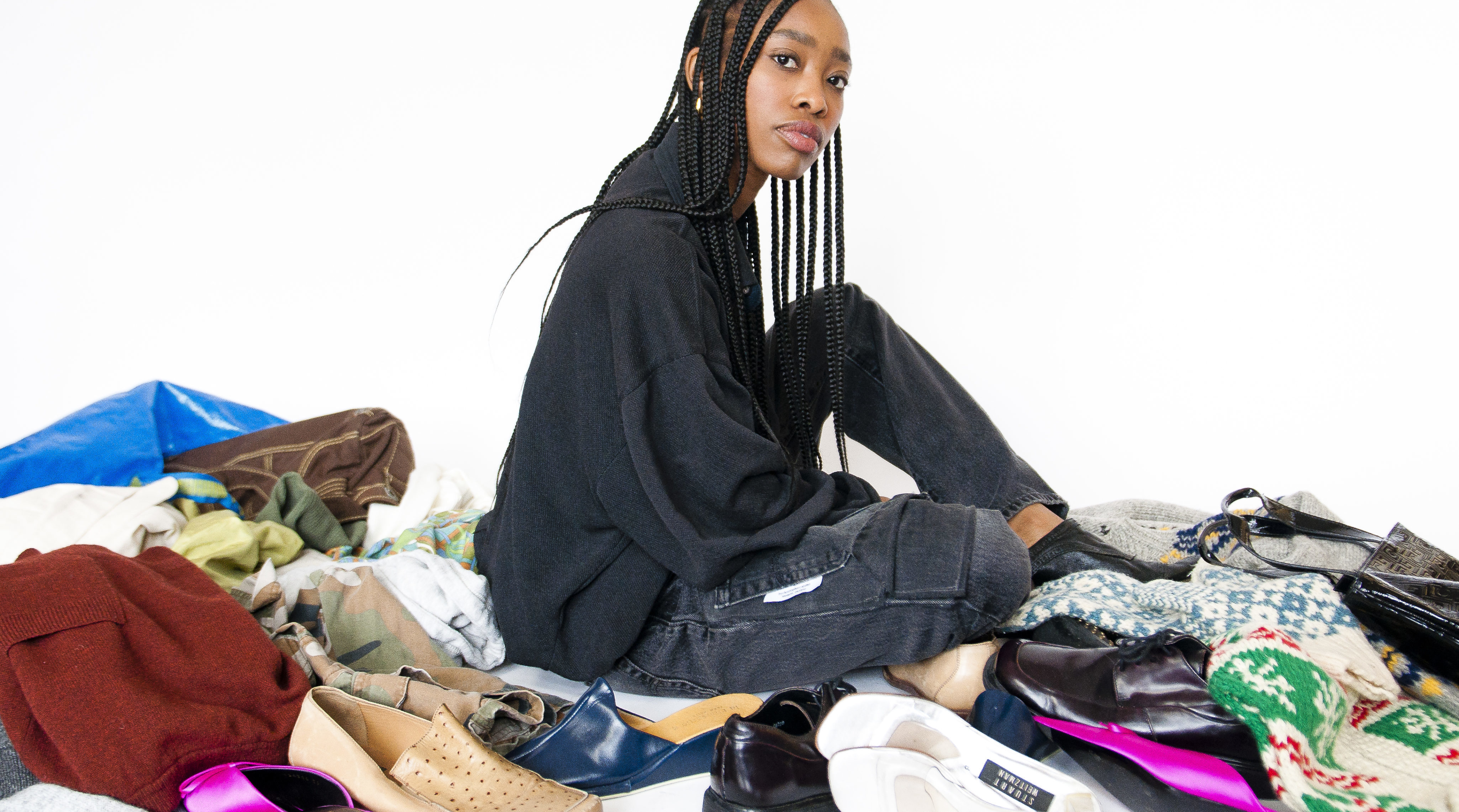
April 29, 2021 at 05:45PM
I got my first part-time job at a Sirens store when I was 15 and living in Brampton, Ont. Though I worked at Square One Shopping Centre in Mississauga, I rarely shopped there, instead taking all my hard-earned money to local thrift stores.
One of my first experiences thrifting was when I was a preteen; I went to Value Village with my mom out of sheer curiosity and after having a difficult time at mass fashion stores because I couldn’t find pieces that fit properly or that reflected my personal style. That single visit opened up my imagination and a willingness to experiment. I would frequent Value Village, The Salvation Army and Goodwill, sometimes taking the same bus to get to the three different shops in one day. I could create any outfit I wanted, and most items cost under $15.
Thrifting gave me access to pieces I couldn’t acquire any other way. I got my first designer items second-hand before I was ever able to purchase a high-end piece at the retail price. I remember once finding a Ports 1961 wool dress at the Talize location in Brampton and being amazed because I knew the brand had a boutique in Toronto’s prestigious Yorkville neighbourhood and I had seen its runway shows online. I was so taken aback to be able to find something of that quality and reverence to me at that time. Clothing — an important medium for self-expression — was accessible at the thrift store, and the possibilities felt endless.
When I moved to Ottawa for my undergrad studies, I developed an even deeper interest in thrifting, enticed by the different things you can discover in such stores, including home decor. I furnished my entire dorm with previously owned housewares, and this was another defining moment as I realized the versatility of shopping second-hand for everyday life.
Fellow students often asked where I had gotten my clothing or if I was in the fashion program (even though Carleton University doesn’t have one). They would never have guessed I was studying economics and finance.
ADVERTISEMENT
ADVERTISEMENTKate Spade Autumn/Winter Sale |
Since so many people were curious about, and in awe of, what I was wearing, I started curating and selling the items I was buying from thrift stores to my classmates. I did my first pop-up out of my dorm room, and upon returning to Brampton after a third-year transfer to York University, I continued to host pop-ups in my backyard as people became increasingly interested in my aesthetic and the array of items I had found for them.
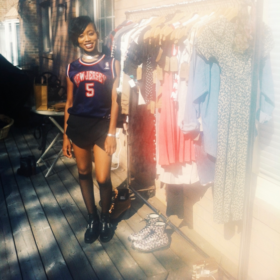
In the suburbs, “curated” thrift stores did not exist, so the hunt was difficult—but also rewarding. I would search for anything I saw that looked similar to styles I had seen in magazines and on websites like Style.com. I loved finding pieces from throw-back streetwear brands like FUBU, Baby Phat and Enyce — all nostalgic labels I had wanted to buy but couldn’t afford when I was younger.
Since I haven’t always been able to find exactly what I was searching for — either for my customers or for my own wardrobe — I have taken to altering pieces by dyeing, patching and cutting them so they can have a new look and a new life. Natural fibres like wool, cotton, linen and cashmere are the best items to take a pair of scissors to (and to transform using natural dyes). I love fraying knits, creating an unfinished hem on denim and chopping raw silk. I’ll normally cut something, dye it and then put it through a wash or two as I prefer a lived-in feel to my clothing.
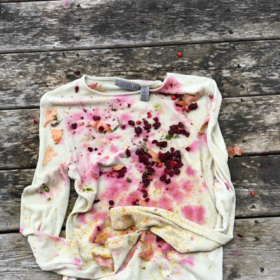
My go-to dyes for colouring pieces are from food scraps and other organic matter. I’ve been a vegetarian for over 10 years, and anything from my waste bin will do — beets and avocado skins, turmeric and sorrel. I sometimes pull things directly from my backyard, gathering dandelions, pomegranates or wild berries. It’s all about testing pigments to see what works, and the majority of how I approach altering clothing is experimental. I take a lot of inspiration from my Jamaican heritage and the dancehall sensibility; much of the clothing in that scene is DIY — garments revised to emulate something someone saw on television, for example, but that wasn’t accessible for them to buy.
This practice of mending and modifying existing pieces is an interest that has grown stronger in recent years as I have taken a harder look at my own consumption habits and considered how to improve them. But despite the negative implications of fashion consumption — from garment-worker exploitation to landfills (and, increasingly, thrift stores) full of fast-fashion pieces — clothing has ultimately allowed me to navigate the world the way I choose.
I encourage others to be open to wearing not-new, upcycled and altered pieces through my partnership with the brand 4YE; I helped launch its Rework collection in 2019. I also run a second-hand retail business called By Pseudonym, and through this platform, I can share ideas about extending the life cycle of clothes in artistic and engaging ways.
View this post on Instagram
Right now, I’m working with my friend, Sydné B. Wright of Ethereal, on an upcycling collaboration. She’s more educated about the practice of repurposing clothing than I am, and, together, we’ll be dyeing knitwear and updating the silhouettes of pieces in By Pseudonym’s inventory. Our reference for these items comes in part from the Fall 1993 Comme des Garçons collection — one that presented pieces with knits and lighter fabrics fused together.
Looking back at my life through the lens of clothes, I see that I’ve been able to use them to show the world who I am and what I believe in. The name By Pseudonym comes from the idea that through style, you can create a different version of yourself — perhaps even of the person you want to be.
The post Fashion Entrepreneur Summer Ruddock-Ellis on Her Sustainable Wardrobe Journey appeared first on FASHION Magazine.
Read More Fashion News
Author Summer Ruddock-Ellis | Fashion Magazine
Selected by CWC
ADVERTISEMENT
ADVERTISEMENTUp to 30% off Gift Sets |




